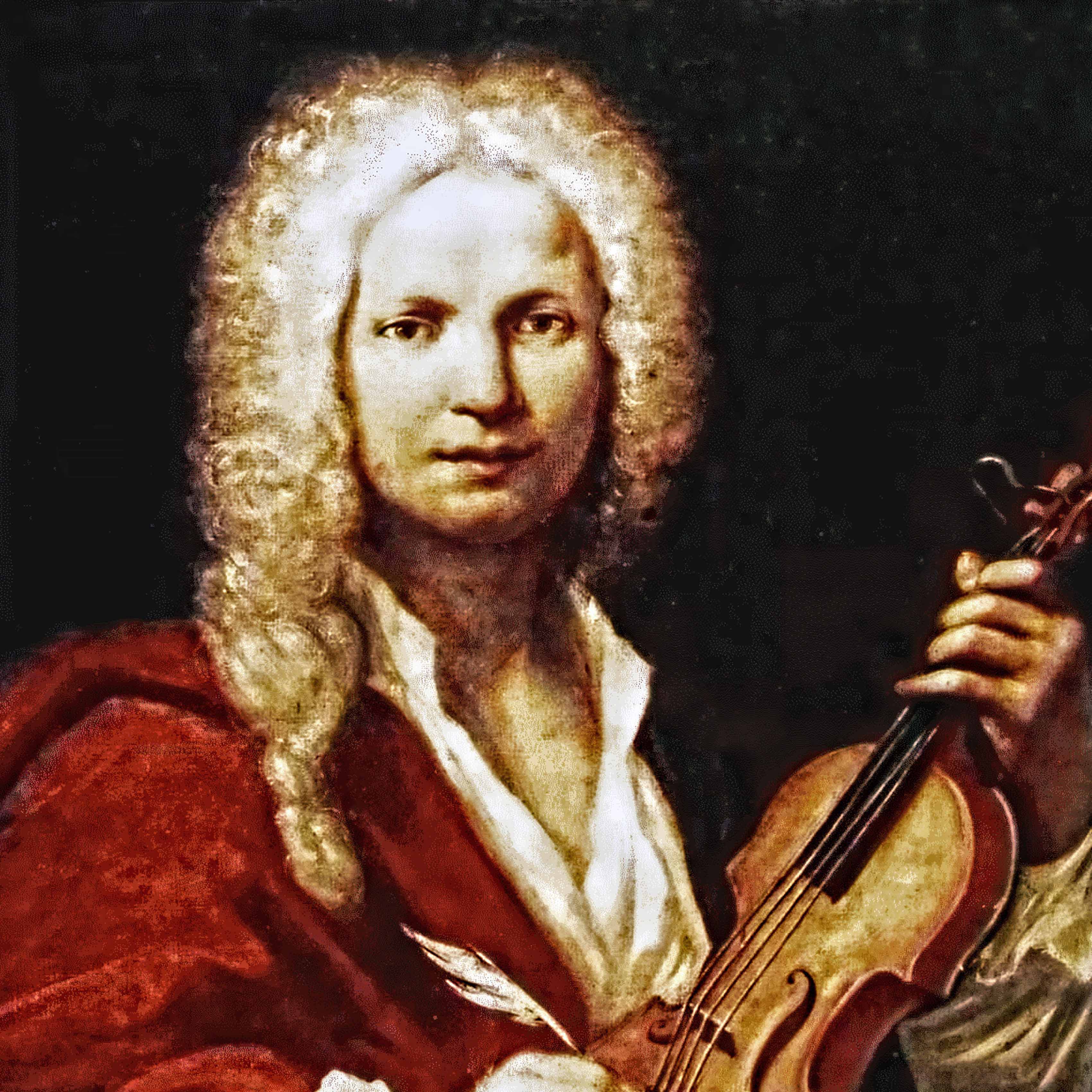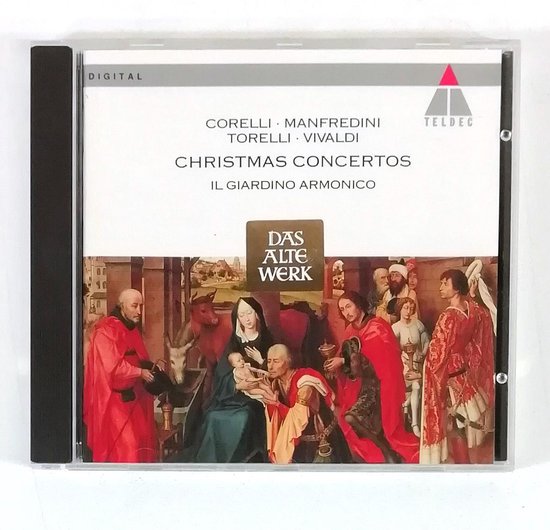Il Giardino Armonico's concerts and discography are notable for their inclusion of rarely performed works by composers such as Rossi, Riccio, Spadi, and Conti, alongside works such as Vivaldi's The Four Seasons. Vivaldi: The Four Seasons. Vivaldi (Composer), Giovanni Antonini (Conductor), Il Giardino Armonico (Orchestra), Enrico Onofri (Performer), Paolo Grazzi (Performer) & 2 more. Format: Audio CD. 4.7 out of 5 stars 29 ratings. See all 7 formats and editions. Il Giardino Armonico’s recording of The Four Seasons is light, lyrical, totally musical and I would imagine a recording that Vivaldi himself would approve of. There is a real quality of tone and balance of strings and continuo that is highly admirable. Il Giardino Armonico’s recording of The Four Seasons is light, lyrical, totally musical and I would imagine a recording that Vivaldi himself would approve of. There is a real quality of tone and balance of strings and continuo that is highly admirable. A highly recommended recording. By Antonio Vivaldi Il Giardino Armonico. (The Four Seasons), Violin Concerto in G Minor, Op. 315 'Summer': III. Presto, tempo impetuoso d'estate. By Antonio Vivaldi Giovanni Antonini, Il Giardino Armonico.

A test of fantasy, emotions and nature
A clear survival of Baroque taste enlivens Vivaldi’s music, in a period otherwise dominated in Italy by Arcadian aesthetic values favouring the principles of balance, prudent restraint and plausibility as against the imaginative extremes of the seventeenth century. This survival, which is a fundamental part of Vivaldi’s complex artistic personality, is manifested by the very titles of his most famous printed instrumental collections: L’estro armonico (The Inspiration of Harmony), op. 3 (1711); La stravaganza (Extravagance), op. 4 (1714); and II cimento dell’armonia e dell’inventione (The Test of Harmony and Invention), op. 8 (1725). “Harmony” here means the strictness and rationality of the rules of composition, whereas “inspiration”, “extravagance” and “invention” are various terms denoting the free use of fantasy and inspiration. In op. 8, published in Amsterdam by Le Cène, the two aesthetic ideas are explicitly given a “test” in a continuing relationship of opposition and integration. This suggests that, as was already the case in L’estro armonico, the more fantastic and Baroque component of Vivaldi’s creativity is modified and disciplined by qualities that were all demanded in the rational approach of eighteenth-century aesthetics — objectivity in the rules of composition, clarity and symmetry of formal structure, and lucidity of design and eloquence.
In cimento the Baroque and imaginative aspect still predominates, if only because this collection is, of all Vivaldi’s printed works, the richest among his compositions that have a representational or descriptive character. Seven of the twelve concertos have non-musical titles: following the very famous Le quattro stagioni (The Four Seasons), which form a group at the beginning (nos 1-4), are La tempesta di mare (The Storm at Sea) RV 253 (no. 5), II piacere (Pleasure) RV 180 (no. 6), and La caccia (The Hunt) RV 362 (no. 10). In terms of an anthology, the published collection contains more or less recent compositions: Le quattro stagioni and La caccia date from around 1720, while La tempesta di mare and Concerto RV 242 (no. 7), which was already dedicated to the violinist Johann Georg Pisendel in the incomplete Dresden autograph version, date from 1716-17.
In essence, op. 8 comprises a group of some twenty of Vivaldi’s concertos that have a marked representational character. As a whole, these programmatic or descriptive works, exceptional in the whole repertoire of Italian music in this period, reflect a historical and artistic context that is ambiguous and very expressive. It is a context in which general aesthetic elements (the classical rule of “imitation of nature” and homage to French taste) are interwoven with particular aspects of Vivaldi’s artistry: the tendency towards an imaginative, narrative, and virtually theatrical dimension in the music; and finally there are commercial considerations (by means of an imaginative, non-musical title, the individual concerto was singled out and so remained more highly valued by publishers and purchasers). The representational content is adapted in a straightforward way to the tripartite structure of the concerto: the programme conveyed by the title is realized in the fast movements, while the slow tempo of the middle movement refers to a complementary image or emotion.
La tempesta di mare is a striking picture drawn from nature; in the middle Largo the storm themes recede from the foreground to the orchestral background, and the doleful arioso of the soloist tends towards vocal expression. Il piacere, like Il sospetto (Suspicion) RV 199, L’inquietudine (Restlessness) RV 234, Il riposo (Rest) RV 270, and L’amoroso (The Lover) RV 271, forms part of the series of works depicting emotions; the basic pleasantness is contrasted with the lament of the Largo e cantabile (descending chromatic line of the ritornello): the experience of pleasure is conditioned by that of pain. La caccia, which makes use of fundamental material based on the imitation of wind instruments, evokes the atmosphere of the hunt in the fast movements by adopting the characteristic sounds of horns, leaving the short Adagio to serve as an intermezzo. Il cimento is a collection of violin concertos, but of the five works without non-musical titles there are two, RV 236 (no. 9) and RV 178 (no. 12), that allow for the optional use of an oboe as an alternative to the principal violin. In any case, both concertos originated as works for oboe, identified as RV 454 and RV 449 respectively; this is documented in the autograph manuscript of the splendid and stirring Concerto RV 454 and is shown in each work by the virtually neutral writing for the solo part, which lacks the agility that is beyond the scope of the oboe. MI the other concertos of op. 8 show a high degree of virtuosity, and figuring that is undoubtedly intended for the violin. The fast tempi of the sumptuous Concerto RV 210 (no. 11) are distinctive for the fugal structure of the main section of the ritornello and for the substantial integration of the thematic material with the solo passages.
Pathfinder: kingmaker - season pass bundle download free. Cesare Fertonani
Translation: Malcolm Gerratt
A little over 250 years ago, Antonio Vivaldi was laid to rest in a pauper’s grave in Vienna Today, if we consider the number of Vivaldi’s recordings alone, the Venetian maestro ranks among the giants of classical music. After all, what had been recorded more often than The Four Seasons? Countless excellent interpretations have kept Vivaldi’s piece alive — here is one that really makes it get up and go. First of all there’s the sonorous name of the young Italian chamber orchestra, IL GIARDINO ARMONICO, which was founded in Milan in 1985 by Giovanni Antonini, Luca Pianca and Paolo Beschi. The “harmonious gardeners” played their way to the top in no time at all. No wonder, since Vivaldi’s enormously popular tunes had never before been played with such Baroque exuberance. The priest and composer Antonio Lucio Vivaldi, called “il prete rosso” because of his reddish-blond hair, applied himself diligently to the composition of operas, cantatas, sonatas and oratorios.
Vivaldi’s extraordinary popularity, however, is based above all on his many Concerti and Concerti da camera. And it is precisely these concertos which II Giardino Armonico chose for its truly spectacular new recording. There are a great deal of Vivaldi recordings of all kinds, but our “harmonious gardeners” have produced one that is truly the pick of the crop.


Bloons td 6 download free. Indeed, Diners Club magazine summed up the ensemble’s bold and uncommon style in 1991 with these succinct words: “Storm tide in Venice’s lagoon! Watch out for crashing strings and capsizing bassoons. Vividly visual Baroque fun.” Exciting entertainment seasoned with authenticity — this is what the “harmonious gardeners” are intent on cultivating.
Il Giardino Armonico Vivaldi The Four Seasons

For the ensemble’s founding fathers, there was no question that their Vivaldi would be played on period instruments. The question was “how” — and herein lies their originality. True to its motto, Il Giardino Armonico is “exciting and unconventional” not only in its sometimes rough-and-tumble yet always thrilling string sound, but also in its outward appearance: Italian elegance instead of concert-hall drabness. Aragami: shadow edition download. Armani and Versace instead of tails and white tie.
Il Giardino Armonico Vivaldi Four Seasons
Just as unconventional are its venues: Il Giardino Armonico has even played its bright and brisk interpretation of Vivaldi’s The Four Seasons in the 19th-century splendor of Milan’s famous Galleria Vittorio Emanuele. Strikingly authentic yet compellingly modern Vivaldi — an exquisite treat plucked from the fertile garden of II Giardino Armonico.
Andreas Kluge
